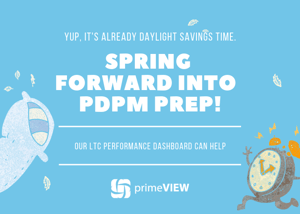Last week, our team attended the annual Ohio Health Care Association (OHCA) convention. Our Senior Customer Success Director Debi Damas also lead a session on the state of senior care. She discussed pandemic challenges and encouraged the exchange of strategies to mitigate change. The following is a recap of this valuable session.
Where does senior care stand and what the heck happened?
- Nursing home staffing shortages only worsened as 2020 came to a close
- 48 states saw occupancy of 80% or less, with some as low as 56%
What can senior organizations do right now?
- Develop purpose-driven, compassionate staff
- Adopt technology to increase connectedness, efficacy, and optimal health
- Embrace telehealth
- Develop a culture of positive aging framed by wellness
- Establish trust by being prepared for emergencies and unexpected events
What happened with senior living census?
- Increased push to home health care
- People wanted no part of facility-based care
- Long-term care (LTC) facilities were not admitting
- Skilled nursing facilities (SNFs) turned beds/halls into COVID units
- Senior care providers are now seeing slight increases in census
How can senior organizations build census?
- Marketing value-adds to prospective residents:
- Amenities
- Telehealth
- Wellness focus
- Sharing positive performance data with hospitals:
- Vaccination rates
- Infection control
- Outcome data, readmission rates
- Identifying an ideal niche based on ICD code(s)
How does revenue look in senior care?
- 55% of SNFs are operating at a loss
- Significant increases in claims denials, resulting in more reviews
- Some managed care is moving from PDPM to levels
- Per Mark Parkinson (CEO of AHCA/NCAL), long term success comes down to:
- State Medicaid rates
- Payer mix
- Financing
- Operational excellence
What staffing trends emerged among senior care employers?
- Rigid schedules/Inflexible call off policies
- 23% of nursing homes had direct care staff shortages in May
- 96% received some government assistance
- 47% received funds from Paycheck Protection Plan (PPP)
- 82% received funds from CARES Act/Provider Relief Fund
- 52% received Medicaid add on or increase from state government
What can senior care organizations do to improve staffing?
- Increase the ways you make staff feel valued
- Change your pay structure
- Offer bonuses – sign-on, working all scheduled shifts, etc.
- Revise staffing policies to benefit employees
- Increase flexibility to accommodate child/eldercare challenges
- Provide a career path; demonstrate benefits of added skills and education
- Be attentive and thorough with screening and hiring
To reiterate one of Debi's earlier points, technology can help. Here are three senior care providers who are benefiting right now from our software.
- Embassy Healthcare saves $1.5M in labor with primeVIEW App
- Symphony Care Network increases revenue $1,200/stay with Managed Care MASTER app
- Hyatt Family Facilities rely on primeVIEW app to consolidate data for monitoring Five Star and PBJ reporting
/Prime-Care-Technologies-Logo.png?width=191&height=55&name=Prime-Care-Technologies-Logo.png)


 This is the time of year to open the windows, air out the house, deep clean long neglected spaces, and tidy up. For AR managers, it’s also a good time to “spring clean” the revenue cycle in a few key ways.
This is the time of year to open the windows, air out the house, deep clean long neglected spaces, and tidy up. For AR managers, it’s also a good time to “spring clean” the revenue cycle in a few key ways.

 What makes billers effective? Habitual attention to specific details and consistent execution of routine, yet critical tasks. I’d like to share with you what our team considers to be nine habits of highly effective long term care billers. Caution the resultant success can be addictive. That's a good thing.
What makes billers effective? Habitual attention to specific details and consistent execution of routine, yet critical tasks. I’d like to share with you what our team considers to be nine habits of highly effective long term care billers. Caution the resultant success can be addictive. That's a good thing.  Ah, yes, it’s that time of year – time to make those New Year’s resolutions. Exercise, diet, vacations, revisit the old “bucket list”, maybe even finances. Finances? Now a financially-focused resolution or two should resonate with any AR Manager. Maybe we can help you kick off 2016 right with some helpful resolution hints. They may not be earth-shaking taken independently, but together, they can certainly have a positive impact for you and your team.
Ah, yes, it’s that time of year – time to make those New Year’s resolutions. Exercise, diet, vacations, revisit the old “bucket list”, maybe even finances. Finances? Now a financially-focused resolution or two should resonate with any AR Manager. Maybe we can help you kick off 2016 right with some helpful resolution hints. They may not be earth-shaking taken independently, but together, they can certainly have a positive impact for you and your team.